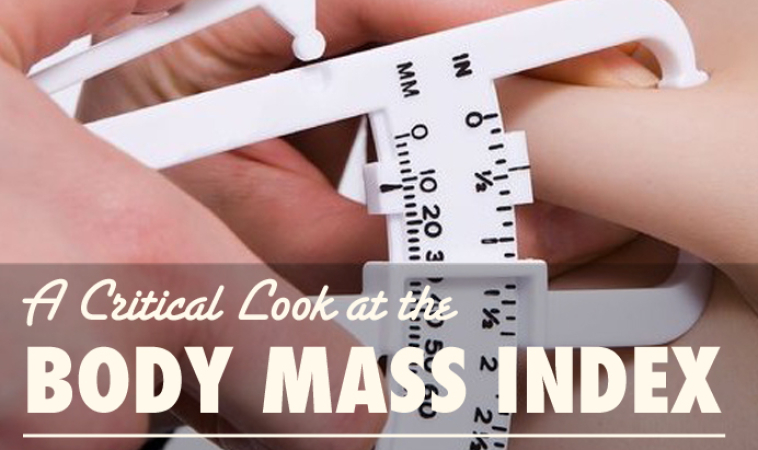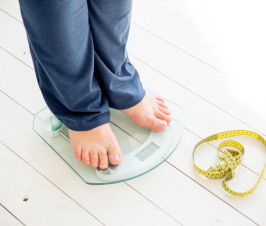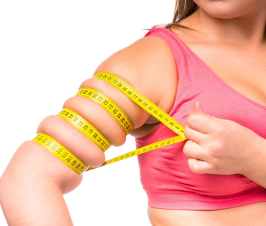Dr. Richard Maurer, ND
@DrRichardMaurer
Why does your doctor, and most medical offices, use the body mass index (BMI) to assess your weight and health? Every workplace wellness program uses it, every federal health initiative relies upon it—but it doesn’t work.
BMI is a calculation of your weight (downward gravitational pull or your mass on Earth’s surface) and your height.
Watch the summer Olympics in 2016 and notice the sprinters. Every individual who competes in the sub-800meter distance is obese on the BMI. Other BMI obese include speed skaters, most swimmers, professional basketball players, and while at the best shape of their careers, Serena Williams and Rafael Nadal.
Personally, I am at 22.5 on the BMI – only 2 BMI points away from overweight . . . yet people who see me know I look scrawny at best—I have 9% body fat. How can I be on the upper half of normal BMI, toward the designation of overweight?
The BMI, like the scale you stand on, curses muscle and bone equal to visceral fat. The irony of the BMI misclassifications is that it “actually misses more than half of people with excess body fat” according to an epidemiologist at Albert Einstein College of Medicine, Geoffrey Kabat.
Apparently BMI is not just imperfect—it’s awful.
You can read Jane Brody’s comprehensive article in the New York Times where she appropriately slams the BMI.
So what can you use for a physical assessment health risk? Body fat.
The gold standard test for body fat, is hydrostatic weighing. A method where you get into a giant tub of water and mass displacement is used to calculate your body fat. This is used only in research settings fortunately, yet with all its accuracy; it fails to show the location of the fat. And body location of the fat is the true marker of disease risk—the more body fat on your core, back & abdomen, the greater your disease risk, especially heart disease. How do you locate your fat then?
Get skin fold calipers. For under $20—cheaper than a scale and it doesn’t need a battery—calipers measure the fat under a pinch of skin in several locations.
Here are a couple pearls I use in my practice:
- If the skinfold thickness measures higher in your hip / beltline area, you carry higher risk of heart attacks and stroke and need to assure that the dietary and fitness habits in your lifestyle effectively change your body fat in your midriff.
- Whereas, if the skinfold thickness measures higher in your arms (triceps) than you are “out of shape”—an unsightly condition, but it doesn’t associate strongly with heart disease. High body fat on the arms compared to hips can also be a marker of hypothyroidism.
 Dr. Richard Maurer is a licensed naturopathic physician who, after practicing in a primary care setting for twenty years, provides a fresh and radical perspective on metabolic health and recovery from disease. Rather than provide yet another medical opinion, Dr. Maurer puts you in the driver’s seat of your health and wellness, helping you decode your blood test results to find the diet and fitness habits that reverse and prevent metabolic conditions, such as prediabetes and type 2 diabetes, weight gain and hypothyroid problems.
Dr. Richard Maurer is a licensed naturopathic physician who, after practicing in a primary care setting for twenty years, provides a fresh and radical perspective on metabolic health and recovery from disease. Rather than provide yet another medical opinion, Dr. Maurer puts you in the driver’s seat of your health and wellness, helping you decode your blood test results to find the diet and fitness habits that reverse and prevent metabolic conditions, such as prediabetes and type 2 diabetes, weight gain and hypothyroid problems.
His recent book, The Blood Code: Unlock the secrets of your metabolism [2014], provides the tools for you to understand and act on key blood tests and skin fold measurements to define your personalized diet, fitness and nutritional needs. Dr. Maurer’s individualized metabolic approach is for teenagers to any age adult—with a goal toward recovering health and vitality, disease reversal is the beginning.
His personal and familial trend toward type 2 diabetes motivates him to empower people to recover their metabolic “sweet spot” through proven self-guided diet, nutritional, and fitness habits.
Dr. Maurer is the past president of the Maine Association of Naturopathic Doctors and most recently presented for the Weston Price Foundation, American Association of Naturopathic Physicians and the popular PaleoF(x) Conference. He lives in Maine with his wife Alexandra where they have raised three children.

















